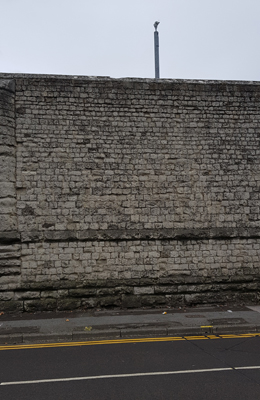Claudia Sturt, the executive director, security, order and counter-terrorism for Her Majesty’s Prison and Probation Service (HMPPS) has set out what she admitted was a ‘bleak analysis’ of crime inside prisons, thanks to mobile phones allowing criminals to arrange drug deals, and launder profits, and import more phones, and even weapons. She also outlined what the authorities are doing about it.
Speaking earlier today to the day three of four of the online International Security Week, which has replaced the pre-pandemic two-day exhibition at London Olympia, she stressed that – as with other crimes, such as countering terrorism – a co-ordinated response to manage serious and organised (SOC) criminals was required, by prisons, probation, police and others, to prevent criminals continue to do harm while in custody.
As for illicit communication by mobile phones, ‘we have found incidences of prison WhatsApp groups being used to circumvent our security procedures, one of them was called ‘neighbourhood watch’.’ Prisoners frequently use encrypted and secure communications, alongside tiny and discreet smartphones. A device that’s a camera, computer and recording device in one can fit in the palm of your hand. A GPS-enabled device the size of a finger (that is, hard to search for) can easily be smuggled in, and out, of a prison, she said, and link with a drone to deliver a package, containing more phones, drugs, sim cards, or even weapons, to the device’s GPS signal at a cell window.
For HMPPS to block signals from outside to illicit mobiles inside, given the widening mobile spectrum and 5G, there’s ‘little realistic prospect’ of an affordable estate-wide roll-out, she said.
As for covid-19, she said that the UK’s first lockdown in March brought an increase in attempts to corrupt prison staff, to facilitate contraband; and those offers were for more financial reward. Just as counter-fraud figures generally have raised concerns that any staff in the pandemic economic downturn may be more likely to succumb to temptation and carry out internal fraud, so she said it was likely that where staff have been financially impacted by covid, they are more vulnerable to attempts to corrupt them.
As for responding to what she called the complex and evolving nature of SOC in prisons, any single agency will struggle to properly tackle SOC offenders alone, she said. It was vital that the criminal justice system work in a joined-up way, she said. Hence the Multi Agency Approach to Serious and Organised Crime (MARSOC); by prisons, probation, police and others; to identify priorities and disrupt the highest-harm offenders.
Police at a local level do not routinely continue such work, beyond a criminal’s conviction and entry into custody. Prison has traditionally been regarded as a respite for society from a criminal, and the police goal. Rather, the criminal justice system now should be looking to further curtail offenders’ criminal activity. Examples she gave were case management; using natural language processing, image and voice recognition and machine learning, to provide insights to threats; (trial) use of biometrics to identify prison visitors, to potentially be shared with police and security services; better mitigating the threat from nominals with cyber skills; and developing an ‘intelligence-informed, risk-based’ approach, to categorising offenders based on their actual threat posed, rather than the offences they were convicted for, to better inform what category prison an offender is inside.
Background
As Claudia Sturt acknowledged, spending by the Government on prisons is including £100m on prison security; such as drug search dogs and handlers.
Inspections by HM Inspectorate of Prisons repeatedly bring up insecurity felt by prisoners and violence against prisoners and prison staff; for example a recent inspection of the high security Gartree Prison near Leicester reported ‘a large rise in the manufacture of hooch (illicit alcohol) within the population, which had been linked to violence, debt and self-isolation’. Prison began a ‘restricted regime’ in March. And an inspection of HMP Lindholme near Doncaster – a category C prison, where over half the prisoners were high-risk offenders, with more than 200 of 900 having links to organised crime – found ‘a third of prisoners said it was easy to access drugs in the prison and 28pc said that of alcohol. The prison had noted an increase of hooch (illegal alcohol) and psychoactive substances’ since covid restrictions.
Photo by Mark Rowe; Maidstone Prison outside wall, Kent.
Part one: ‘bleak analysis‘ of mobile phone-enabled contraband inside prisons.









